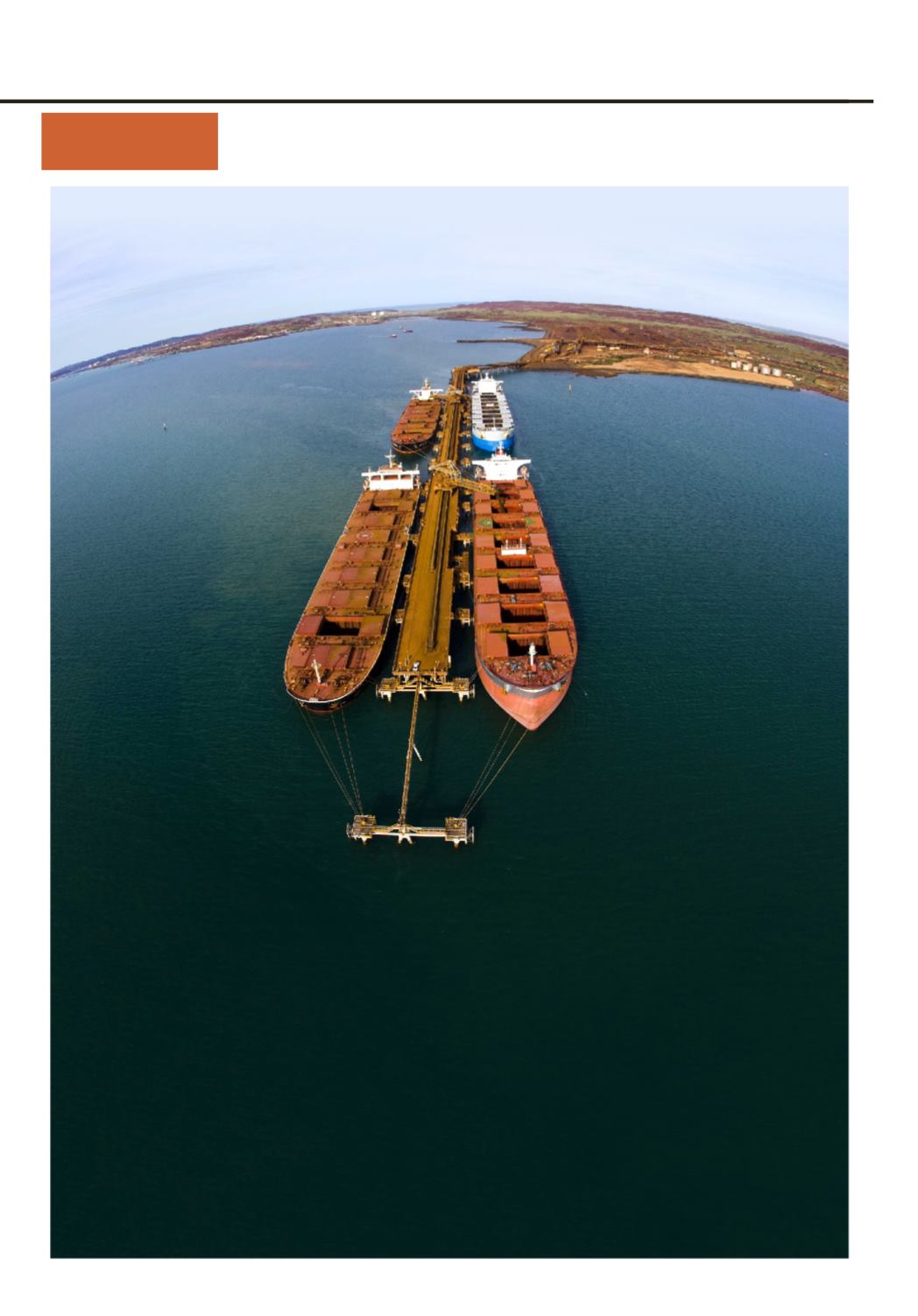

DELTARES, SEPTEMBER 2015
23
PHOTO: RIO TINTO
R
io Tinto is an inter-
national mining
company with
its head offices in
London. It has global
operations, working
with a wide range of minerals and
rawmaterials such as aluminium,
copper, diamonds, opals, gold, borate,
titanium, salt, iron ore, coal and
uranium. One of Rio Tinto’s main iron
ore operations is in the Pilbara area
in Australia. Every year, hundreds of
millions of tonnes of high-grade iron
ore are shipped from two ports to
locations throughout the world.
Five years ago, all mining companies
engaging in the export of iron ore fines
were informed by the International
Maritime Organisation (IMO) that
these cargoes would be classified as
being liable to liquefy during ocean
transportation.
The IMO’s decision was taken in
response to fatalities caused by the
capsizing of vessels carrying iron
ore fines, and reports suggesting
that the cause was the liquefaction
of cargoes with high moisture
contents as a result of the cyclic
motion of the vessel at sea. The IMO’s
intervention meant that shippers
would be required to determine the
transportable moisture limit (TML) for
their iron ore fines and ensure that
the moisture level of their cargoes
would be below the TML. As Rio Tinto
has shipped over 3 billion tonnes
in more than 50 years without
incident, the company wanted a
detailed investigation of how its
iron ore fines behave during ocean
transportation to ensure continued
safe transportation.
After conducting a survey of research
institutes throughout the world,
Rio Tinto decided to call in Deltares
and Marin from the Netherlands to
conduct the research.
The research assignment proved
to be quite challenging: the combi
nation of ship movement, cargo
properties and liquefaction was
not well understood. The process
of intensive teamwork involving
Deltares, Marin and Rio Tinto Iron
Ore ultimately delivered the technical
and scientific evidence showing how
iron ore fines can be transported
safely. This evidence allowed the IMO
to reclassify iron ore fines on the
basis of sound scientific knowledge.
The principal benefit is that Rio Tinto
has confirmed that its cargoes of iron
ore fines are safe to transport and
that the company now knows why.
This result means that the company
can continue to ship its iron ore
fines as it has in the past without
the constraints of TML and the costs
associated with compliance.
SAFE SHIPPINGOF
BULKSOLIDCARGOES
Alliance between Deltares and industry produces innovative techniques
and creates new market opportunities for business.
KNOWLEDGE
IN OPERATION



















